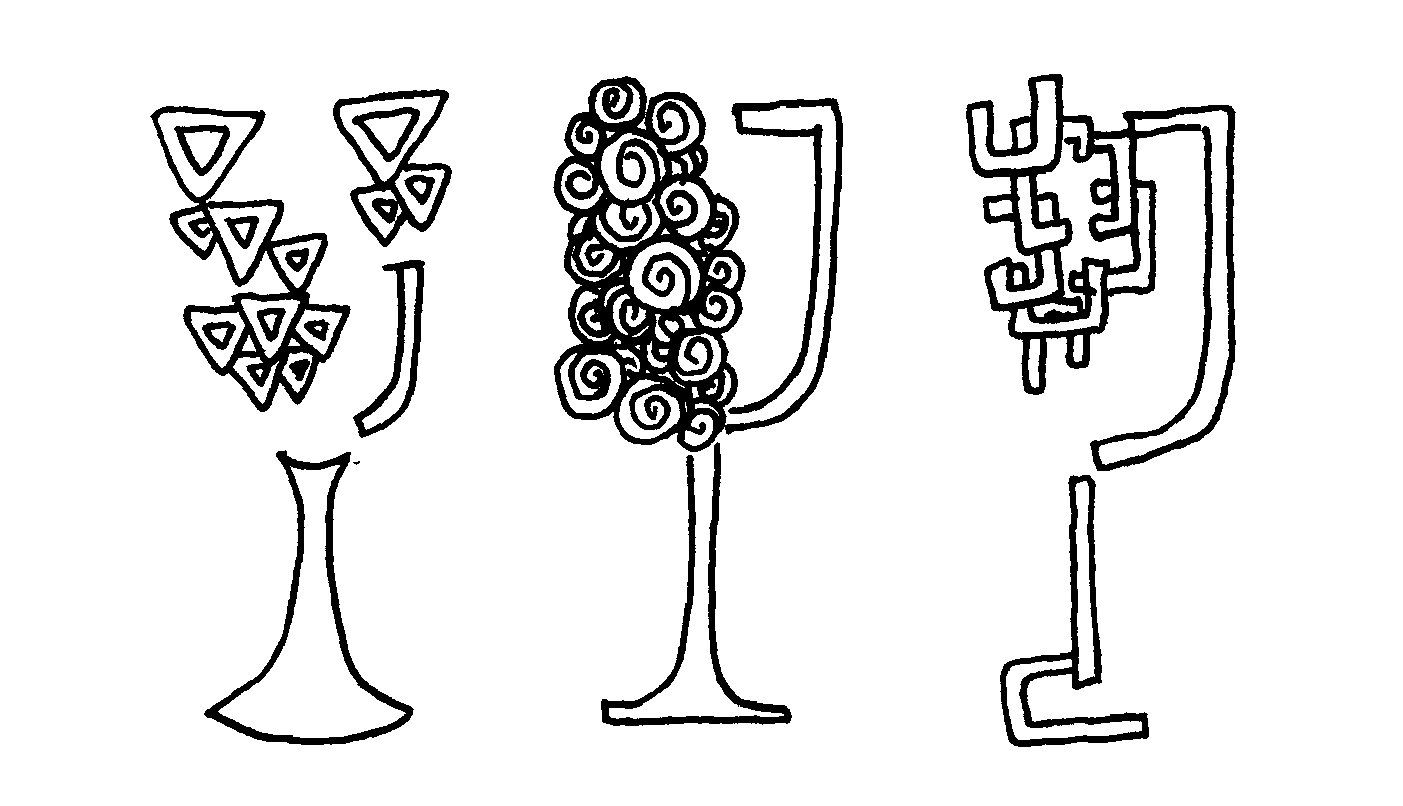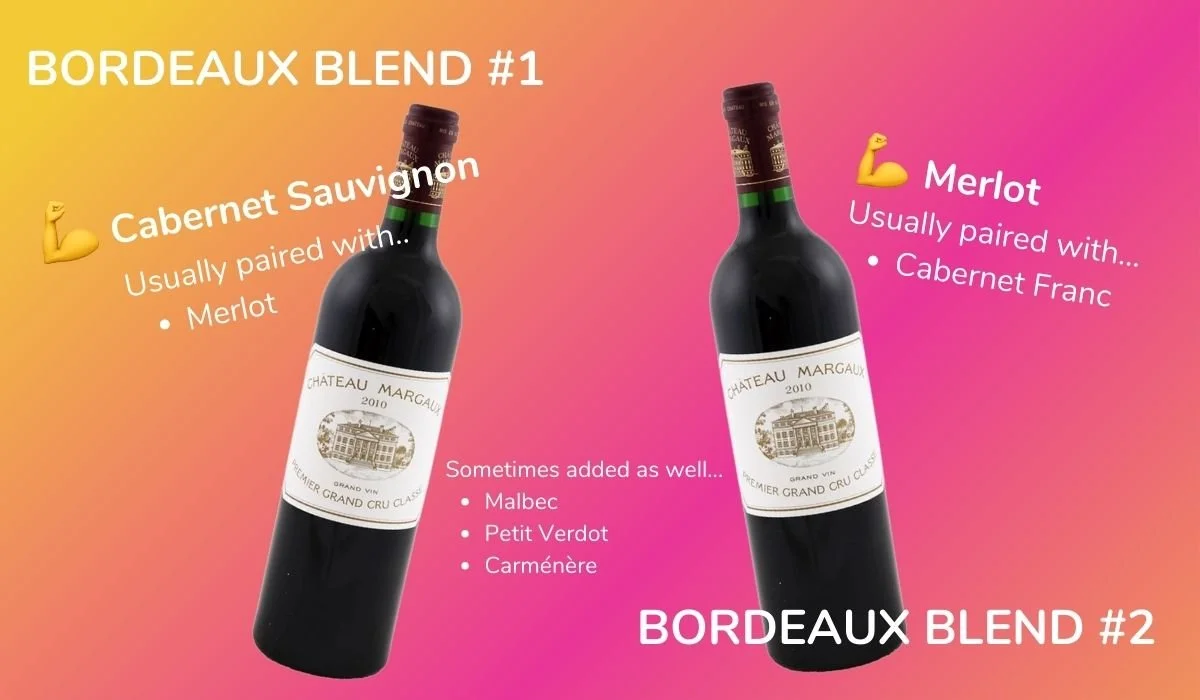Bordeaux’s soft and beefy sides: Merlot v Cab
It’s Bordeaux season!! For the next, I don’t know, six weeks or so, we’ll be covering all things Bordeaux in our membership, Sunday School Wine Society. As we discussed in our previous blog, the magic of Bordeaux is that the wines are (nearly) always blends.
(Catch up on whyyyyy they’re all blends here.)
Who’s the boss: Cabernet Sauvignon or Merlot?
The two grapes that really steal the show in your Bordeaux reds are Cabernet Sauvignon and Merlot. Nearly all Bordeaux primarily use one of these two grapes.
Hence, you’ll find there are two types of Bordeaux blends: blends dominated by Cabernet Sauvignon and blends dominated by Merlot.
In the mix: most Bordeaux wines are blends, with either Cabernet Sauvignon or Merlot as the dominant grape.
Bordeaux blends are either dominated by Cabernet Sauvignon or Merlot
Almost all blends will have one of these two grapes as the main player. In the case of Cabernet Sauvignon, Merlot will play the supporting role. Merlot, on the other hand, is usually paired with Cabernet Franc as its sidekick. (You may also find Malbec, Petit Verdot and occasionally Carménère in the mix.)
How will they taste different?
Whether a wine is more Cab or more Merlot makes a big difference to how it will taste (and also when it should be drunk).
Bordeaux’s beefier side: Cabernet Sauvignon
Cab Sauv is where Bordeaux gets all macho. Small, but thick skinned, Cab is deep in color and comes loaded with tannin. The fruit is dark—think cherries and blackcurrants—though there’s often a savory component too (tobacco, cedar).
These are the serious Bordeaux. They often need to age
The high tannin allows these wines to age for decades, but it also means that it can be unpalatable when young. Hence, the addition of Merlot (and possibly Cabernet Franc) to help tame it.
Bordeaux’s softer side: Merlot
Merlot is generally fresher and fruitier than Cab, with easy-going tannins, making it more approachable when younger. While mellow, it is also more alcoholic. Deep in color, it shows aromas of prunes and forest floor. In its worst incarnations it is simple, with plummy sweet fruit. At best, it is more restrained, offering tobacco qualities and a rich silkiness.
Merlot is paired with Cabernet Franc
Merlot prefers cooler sites and clay-limestone soils, which Cab struggles on. Merlot is found planted with Cabernet Franc, which is the main blending partner here. Its job is to add structure and a touch of freshness to the often rich and fruity Merlot.
These are more approachable when young. And often less expensive.
So, what’s the trick to knowing if it’s gonna be more Cab or more Merlot??
It depends on which side of the river it comes from!
By convention Bordeaux is split into two sides based on the Gironde river: the left bank and the right bank (as if you were sailing down the river towards the ocean). Though the rules say you can grow any designated grape anywhere within the entire Bordeaux region, each bank is known for a particular grape: Cab is big on the left bank, Merlot on the right.
Which is left, which is right? Imagine you’re sailing up the river towards the Atlantic—that will indicate the left bank and right bank.
In other words, if you have a Bordeaux from the left bank it’s going to be Cab dominant and you’re going to get more of a beefier wine, good for aging (and decanting); wines from the right bank will be Merlot dominant—richer, softer, and more approachable.
But how do you know where a wine is from?
The problem for the consumer is that the French don’t label by grape, but by subregion or appellation, so you need to know which sub-appellation is on which bank. (It’s easy enough to Google, though.)
Here are some shortcuts to remember (and what to look for on the label):
Left-bank appellations (Cab heavy)
Medoc (larger sub-region on the left bank)
Margaux, St Julien, Pauillac (home to some of the fancier producers).
Graves
Pessac-Léognan
Remember: these Cab-forward Bordeaux are typically more ageworthy, more expensive, more serious, more structured.
Right-bank appellations (Merlot heavy)
St Emilion
Pomerol
Côte de Blayes
Côte de Bourg
Remember: these Merlot-forward Bordeaux are generally softer, fruitier, less expensive, more approachable, good for weeknights, better value, drink-now wines.
Are you on Team Left Bank or Team Right Bank? 🙋🏼♀️🙋🏽🙋🏻♂️Comment below!
P.S. Are you a member of Sunday School Wine Society? Check all our Bordeaux fun stuff, like our intro to Bordeaux video, this cheat sheet with ALL the left-bank-right-bank shopping secrets and our Bordeaux class replay with Julien Mingot (of Château Maréchaux) where we talk about natural winemaking, terroir and climate change.
Not a member? Learn more here!








The two grapes that really steal the show in your Bordeaux reds are Cabernet Sauvignon and Merlot. There’s a big difference in style between the two. So, how do they taste different, and how do you know which one you’re getting (cause it won’t say on the label)?